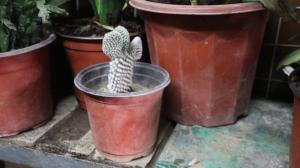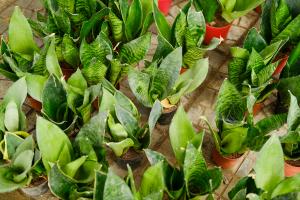How to Set Up a Dry Plant Aquarium without Water
A dry plant aquarium is a great alternative to traditional aquatic tanks, as it requires less maintenance, is more affordable, and provides a unique decorative touch to any room. If you're interested in setting up a dry plant aquarium, here are the steps you need to follow:
Step 1: Choose the Right Container
The first step to setting up your dry plant aquarium is to find a suitable container. You can use any container that is large enough to accommodate your chosen plants and accessories, but we recommend using a glass terrarium or a bottle with a wide opening. The size of the container will depend on the number and size of the plants you want to include.
Step 2: Add the Substrate
Once you have your container, the next step is to add the substrate. The substrate is the material that will hold your plants and will provide them with the nutrients they need. We recommend using a soil mix specifically formulated for terrariums or succulent plants, as it will ensure proper drainage and moisture retention.
Step 3: Choose Your Plants
For a dry plant aquarium, you'll want to choose plants that thrive in low-moisture environments. Succulents, cacti, air plants, and mosses are all great choices. Be sure to choose plants that have similar light and water requirements, to ensure they thrive together in your container.
Step 4: Add Decorative Elements
Now that you have your plants in place, you can add decorative elements to enhance the overall look of your dry plant aquarium. You can add rocks, pebbles, sand, shells, or other natural elements to create a unique and visually appealing display.
Step 5: Place Your Container in a Suitable Location
Once you've finished setting up your dry plant aquarium, you'll want to find a suitable location to place it. These plants thrive in bright, indirect sunlight, so be sure to find a spot in your home that gets plenty of natural light. You'll also want to avoid placing your aquarium in areas with extreme temperature fluctuations or drafts.
Caring for Your Dry Plant Aquarium
Caring for your dry plant aquarium is relatively simple, and requires less maintenance than traditional aquatic tanks. Here are a few tips to keep your plants healthy and thriving:
Water sparingly--these plants don't need a lot of water, and overwatering can lead to root rot.
Monitor for pests--keep an eye out for common terrarium pests like mealybugs, spider mites, and scale insects.
Rotate your plants--to ensure even growth and sun exposure, rotate your plants every few weeks.
Prune regularly--keep your plants looking neat and healthy by pruning away dead or dying leaves.
The Bottom Line
A dry plant aquarium is a fun and creative way to bring a touch of nature into your home. With the right container, suitable plants and substrate, and some decorative elements, you can create a visually appealing display that requires minimal upkeep. So why not try setting up a dry plant aquarium today?

 how many times do yo...
how many times do yo... how many planted tre...
how many planted tre... how many pine trees ...
how many pine trees ... how many pecan trees...
how many pecan trees... how many plants comp...
how many plants comp... how many plants can ...
how many plants can ... how many plants and ...
how many plants and ... how many pepper plan...
how many pepper plan...































